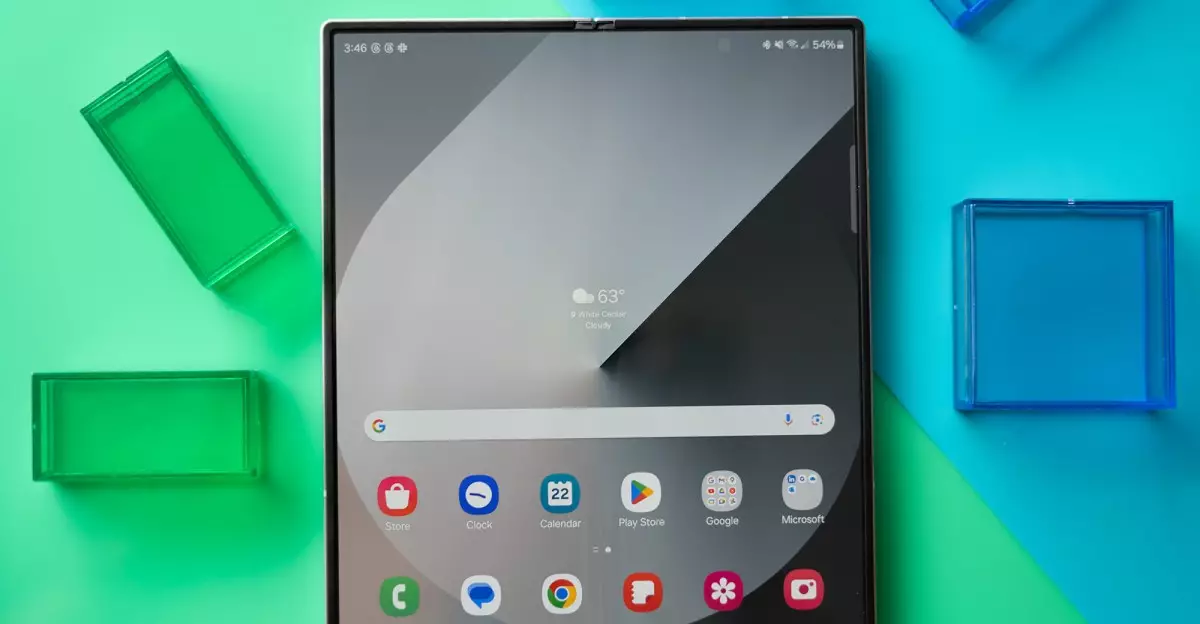Samsung’s persistent push into foldable smartphones signifies a company not content with incremental improvements but eager to redefine mobile innovation. The tech giant has long been the pacesetter in this niche, pioneering designs that challenge the traditional slab smartphone. Yet, despite years of investment and marketing efforts, foldables still remain a niche aspiration rather than a mainstream staple. Samsung’s latest unveiling plans suggest a bold intent to elevate this segment—introducing flagship Ultra models, larger screens, and sleeker profiles. The question is whether these technological defibrillators will reboot consumer enthusiasm or merely echo the ongoing cycle of incremental enhancements. Samsung’s approach openly acknowledges the hurdles—cost, durability, and market perception—that have hampered foldables’ rise. Their latest strategy appears to focus on addressing these pain points directly, hoping that a combination of premium features and nuanced design will finally tip the scales in favor of wider adoption.
Market Realities and Consumer Reluctance
Despite the buzz, foldable phones continue to confront an uphill battle against ingrained consumer habits and cost barriers. Market penetration remains alarmingly low, representing a mere 1.5 percent of the global smartphone industry. This lukewarm reception is not for lack of curiosity—many potential buyers express interest, yet few are willing to make the leap. A significant barrier is durability; foldables are inherently more vulnerable to dust ingress and mechanical wear, issues that are only partially addressed by current warping technology. The premium price tag, often hovering around or above a thousand dollars, exacerbates hesitancy, especially when potential buyers question whether the benefits justify the costs. Samsung’s recent launches, characterized by iterative improvements rather than revolutionary changes, have failed to significantly move the needle. The promise of a thinner profile, larger front screens, and more refined designs signals an awareness of these shortcomings, but whether these tweaks will convince the broader market remains uncertain.
Innovation as a Differentiator: Will it Matter?
Significant innovation might be the only way for foldables to escape their niche status. Samsung seems acutely aware of this, preparing to introduce an ultra-premium foldable with high-end specs—an “Ultra” model that aims to be a true flagship in every sense. Such a device could serve as a proof point, demonstrating that foldable tech can rival, if not surpass, traditional flagship smartphones in performance, design, and durability. The potential redesigns—larger cover screens, more durable hinges—aim to shift perceptions that foldables are fragile or unworthy of investment. However, technology alone is unlikely to turn the tide; consumer trust and value perception play equally vital roles. The company’s challenge will be convincing users that the advantages—flexible form factors, larger displays, multitasking capabilities—justify the premium. If Samsung’s Ultra foldable delivers on these promises convincingly, it could catalyze broader market acceptance.
The Role of Broader Market Dynamics and Future Prospects
Looking beyond Samsung, the smartphone landscape is slowly warming to the foldable concept—partly spurred by industry rumors and competitor movements. The anticipated entry of Apple into the foldable space, projected around 2026, is a particularly noteworthy development. Apple’s brand power, ecosystem integration, and loyal customer base could accelerate foldable adoption considerably. Such a move might compel Samsung to recalibrate its strategies, either through aggressive pricing, more innovative features, or enhanced durability solutions. The introduction of multiple foldable models at varying price points could help Samsung diversify its offerings and capture different segments, similar to its successful approach with Galaxy S and Note series. Ultimately, the fate of foldables hinges on whether technology can overcome durability issues and if consumers perceive them as valuable enough to replace their traditional smartphones.
Core Challenges and Opportunities Ahead
While Samsung’s ambitions carry promise, critical challenges persist. Durability remains a glaring concern—without robust dust and water resistance, foldables will always be perceived as fragile toys rather than reliable daily drivers. Repair costs further dampen enthusiasm, as users are wary of spending top dollar on a device that could easily incur damage. Addressing this, Samsung’s efforts to improve hinge design and sealing could be pivotal. Moreover, affordability is an obstacle; despite improvements, foldables often come with a price premium that limits their appeal to early adopters and affluent buyers. Nonetheless, the potential gains—such as transforming the smartphone experience with larger, more versatile screens—are compelling. If Samsung manages to deliver a foldable that combines durability, performance, and more accessible pricing, it could finally turn foldables into a true mass-market phenomenon.
The Reality Check: Will Innovation Matter Enough?
At the core, Samsung’s latest initiatives highlight a fundamental truth: innovation must be paired with consumer trust. No matter how cutting-edge the hardware, if users doubt durability or see little value beyond novelty, foldables will struggle. Market leaders like Samsung can push technological boundaries, but they need to do so with a keen sense of consumer psychology. Offering more durable, more affordable, and more appealing foldable devices could be the game-changer—and perhaps those are the very strategies Samsung is setting in motion. Nonetheless, they must be prepared for a long game, where shifting perceptions and building trust take precedence over quick wins. The coming year will be critical in revealing whether Samsung’s bold ideas can finally unlock the foldable’s true potential or if they will remain a premium, niche solution for years to come.

